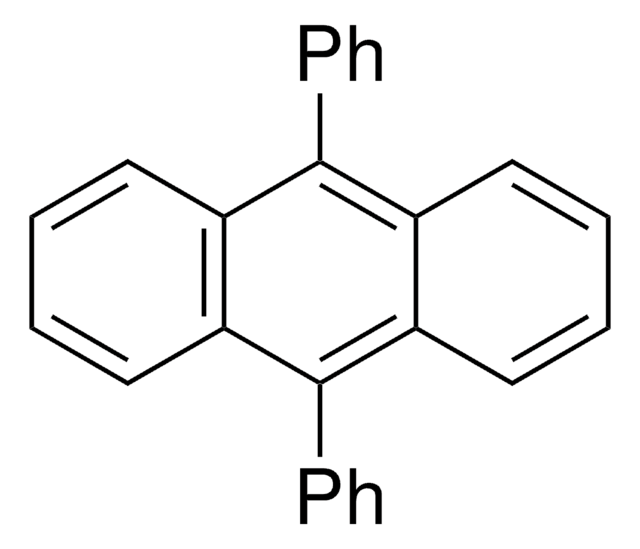15090
1,4-Bis(2-methylstyryl)benzene
BioReagent, suitable for scintillation, ≥98% (UV)
Synonyme(s) :
Bis-MSB
About This Item
Produits recommandés
Gamme de produits
BioReagent
Essai
≥98% (UV)
Forme
solid
Pf
180-182 °C (lit.)
180-182 °C
Fluorescence
λem 416 nm in heptane
λem 419 nm in cyclohexane
Adéquation
suitable for scintillation
Chaîne SMILES
Cc1ccccc1\C=C\c2ccc(cc2)\C=C\c3ccccc3C
InChI
1S/C24H22/c1-19-7-3-5-9-23(19)17-15-21-11-13-22(14-12-21)16-18-24-10-6-4-8-20(24)2/h3-18H,1-2H3/b17-15+,18-16+
Clé InChI
QKLPIYTUUFFRLV-YTEMWHBBSA-N
Vous recherchez des produits similaires ? Visite Guide de comparaison des produits
Application
Produit(s) apparenté(s)
Mention d'avertissement
Warning
Mentions de danger
Conseils de prudence
Classification des risques
Acute Tox. 4 Oral - Aquatic Chronic 4 - Eye Irrit. 2
Code de la classe de stockage
11 - Combustible Solids
Classe de danger pour l'eau (WGK)
WGK 3
Point d'éclair (°F)
Not applicable
Point d'éclair (°C)
Not applicable
Équipement de protection individuelle
Eyeshields, Gloves, type N95 (US)
Faites votre choix parmi les versions les plus récentes :
Déjà en possession de ce produit ?
Retrouvez la documentation relative aux produits que vous avez récemment achetés dans la Bibliothèque de documents.
Les clients ont également consulté
Notre équipe de scientifiques dispose d'une expérience dans tous les secteurs de la recherche, notamment en sciences de la vie, science des matériaux, synthèse chimique, chromatographie, analyse et dans de nombreux autres domaines..
Contacter notre Service technique












